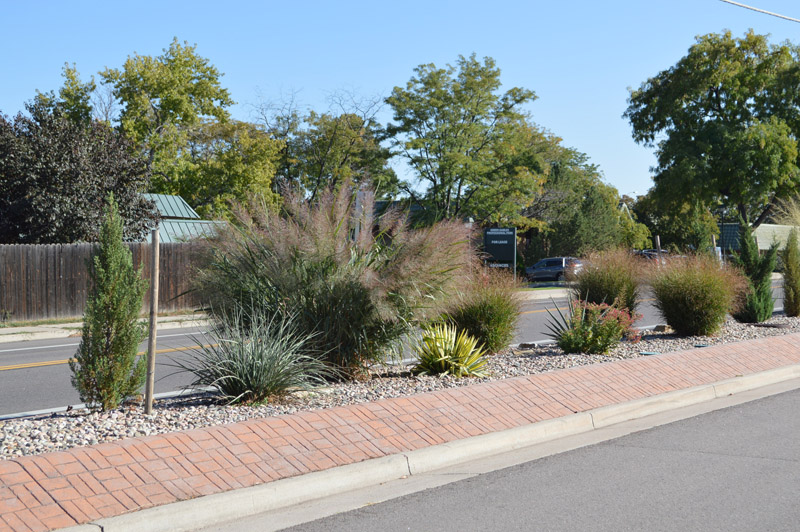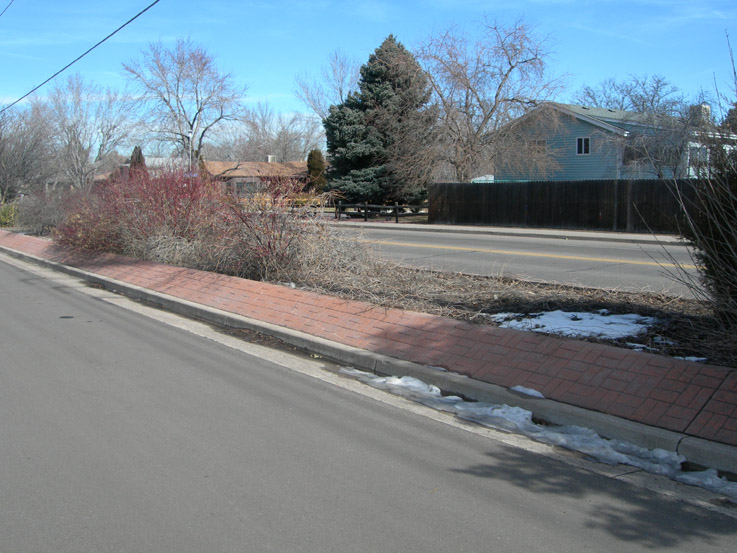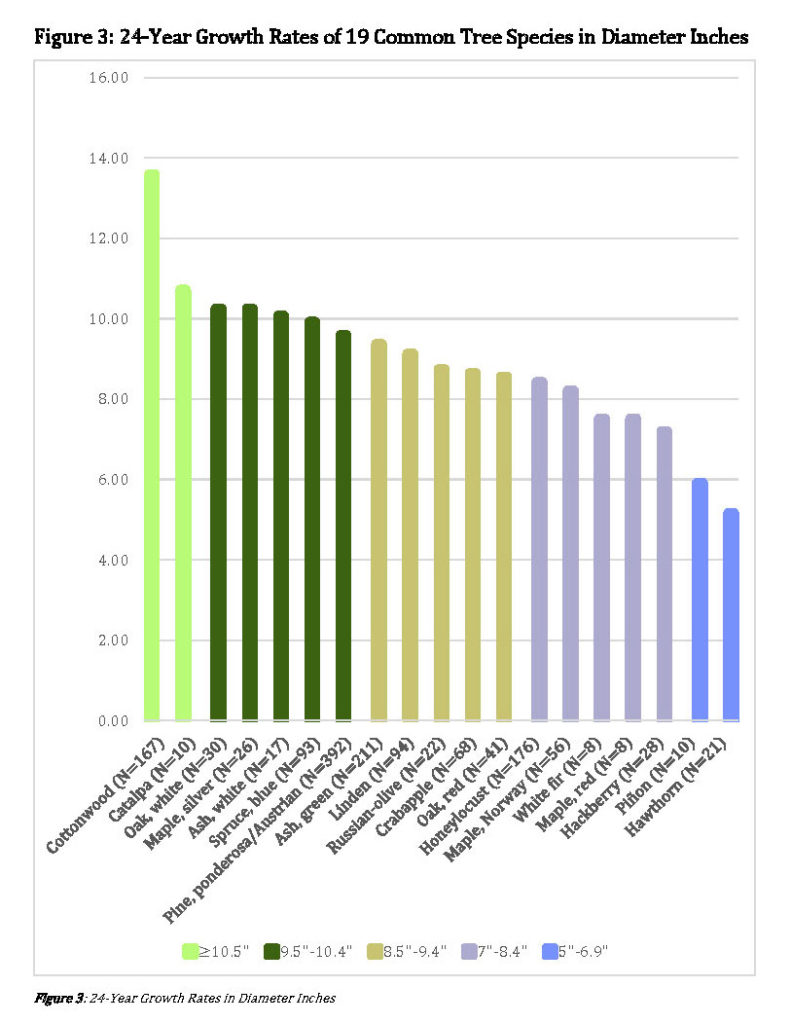Lot Lines – the Official Blog of Outdoor Design Group, Colorado Landscape Architects
Photo of the Day: Before and After of Street Median Landscape
Today’s photo is a recent view of a portion of one street median renovation we designed in Lakewood Colorado. We designed several landscape plans for this renovation project, consisting of many miles of existing street medians in that city, that are slated for renewal. It was an interesting and challenging project to work on, and the city staff were great to work with. We look forward to seeing how these designs grow and flourish over time!


This is the official blog of Outdoor Design Group, Colorado Landscape Architects. For more information about our business and our services, click here.
Related Posts:
Are All Oak Trees Slow Growing? …No, They’re Not
It seems that the fields of landscaping and gardening are full of many timeworn statements that people like to repeat over and over. Some of these green “rules of thumb” are tried and true, while others may not be so true.
One landscape stereotype regarding tree growth rates that is being challenged is the old adage that “oak trees grow slowly”. I have heard and read this many times and I have repeated this mantra myself for years. But a study of urban trees in the Denver Metro area, published by the Colorado State Forest Service, got me to rethink that stereotype.
This tree study recorded the growth rates of 19 commonly planted trees planted in public land in the Denver suburb of Westminster, for 24 years. The authors of the study measured the trunk diameters of the trees in 1992, 2000, 2008, and 2016.
The most eye-opening nugget of information in this report is that the white oak group of trees (bur, swamp white and English oak) were the 3rd fastest growing trees in the study! They grew faster than green ash, lindens or honeylocust trees. They even had the same rate of recorded growth as silver maples, a species often referred to as a “fast grower.”

One important take-away from this study for me is the fact that we should reevaluate what trees seem to be the best for planting in challenging ecosystems such as the urban/suburban areas of the high plains where Denver sits. It is worth quoting the State Forest Service report to emphasize this point:
“Some tree species revealed to be fast or moderate growers in this study have previously been viewed as slow growers, and they are often passed over at planting time. However, equating growth rates with vigor can be misleading, as some of the slower-growing tree types on this list can be the most adaptable to the area (including hawthorn, hackberry and honeylocust). Adding newly discovered fast-growing species to the planting palette and incorporating hardy, slow-growing species will maximize the success of planting projects and promote species diversity.”
To be clear, it is only one type of oak trees (white oaks) that exhibited fast growth in the study sample. Red oak was also in the study and showed slower growth. The authors note this is possibly due to the low pH of high plains soils.
It very well could be that other types of oak trees grow slowly too, but we don’t have data for that. Or, perhaps another study may come along and challenge that, as well. So, as with many “rule-of-thumb” type statements, don’t believe it until you have seen some data to back it up.
This is the official blog of Outdoor Design Group, Colorado Landscape Architects. For more information about our business and our services, click here.
Related Posts:
Project Highlight: Church Landscape Addition & Renovation
In 2016, the congregation of Saint Francis of Assisi Catholic Church in Longmont, Colorado decided to expand their existing building to better serve their growing congregation. The proposed addition to the existing building would impact the existing landscaping, so our company was hired to design the renovation and adjustments of the landscape around the building.
The remodel of the building will be done in multiple phases. So far, phase 1 of the renovations has been constructed.

Like many church construction projects, this one had to be cost conscious. Due to budget constraints and various budget reviews, the proposed plantings were adjusted several times during the planning stages to best fit the current needs of the budget.
One particular technical challenge was the assessment and modification of the existing irrigation system and pumps. Our irrigation specialist was dispatched to the field multiple times to work with the Church’s maintenance crew to puzzle out the best way to adjust and modify the existing irrigation system. In the end, we were able to bridge the new and existing irrigation systems into a cohesive whole.
From a planting design perspective, the client had a few key points they wished to address: Blend new and existing plants seamlessly; create a low maintenance & low water use landscape; and add seasonal focal points to pair with the liturgically appropriate seasonal milestones that are critical to the Church.
Our team worked with the Church’s maintenance team to ensure the plantings and other landscape elements would be low maintenance. Hearty and reliable plant species were chosen for the design. We also wanted the new plantings to blend seamlessly with the existing landscaping. In addition to these criteria for the plants, we also ensured the plantings in the expanded parking lot would not obscure any critical sight lines for pedestrian and vehicle safety.
To create seasonal focal points, we considered different plants that might be at their peak during significant seasonal holidays. One good example of this is forsythia shrubs with their glorious yellow blooms that appear close to Easter, a very significant holiday in the Catholic Church. Not only are the seasonal focal points a visible manifestation of seasonally significant biblical events, these planting nodes provide attractive backdrops for photo opportunities during church sponsored events such as weddings.
Working on the landscape renovations for the Saint Francis of Assisi Catholic Church was a wonderful experience for our design team. It was satisfying to help the Church achieve their landscape design goals for their congregation and stay on budget.
This is the official blog of Outdoor Design Group, Colorado Landscape Architects. For more information about our business and our services, click here.












